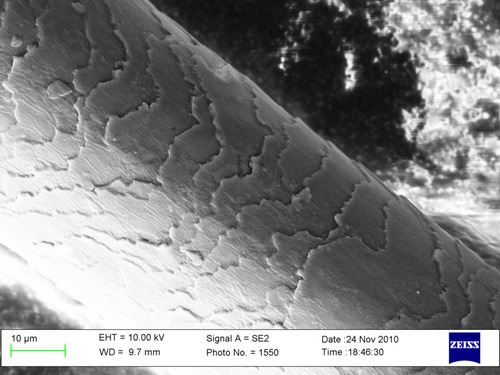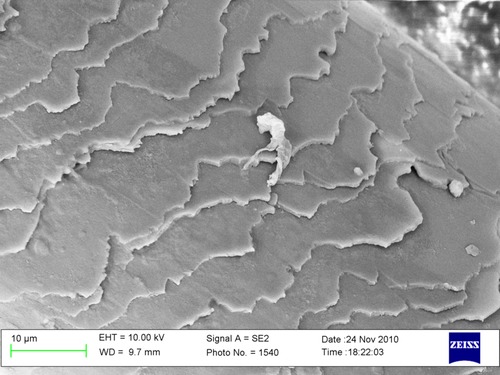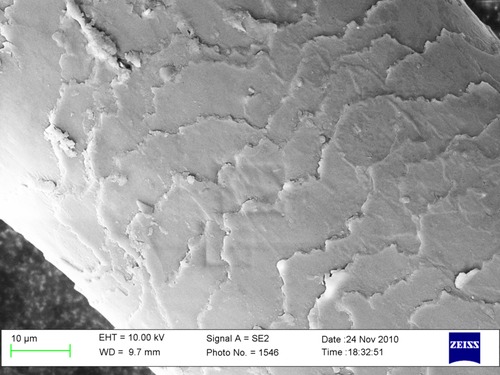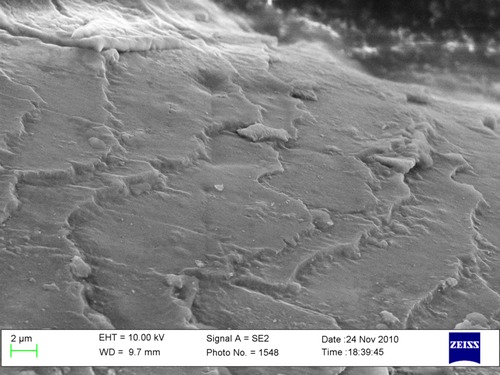Hair Experiment

The Problem
Frequently, my girlfriend (in the following "the subject") and others told me to use shampoo instead of shower gel to wash my hair. Even better, I should use shower gel and conditioner afterwards. They told me that you can see and feel the difference.
Is this only a marketing thing or is it really better to use specialized shampoo instead of a normal shower gel for washing your hair? Can you see and feel the difference between the different products?
Experimental setup
I washed my hair in different ways and subsequently the subject rated the look (visual) and feel (touching) of my hair. As it is hard to wash your hair blind and without knowing what you are using, this experiment could not be performed as a double-blind trial.
One sunday in November 2010 I started my self-experiment. In the shower I divided the surface of my head in four different quadrants: left-front, left-back, right-front and right-back.
As principle investigator I washed each quadrants with a different washing liquid:
- Water, Hamburger Wasserwerke
- Shampoo, Garnier Fructis for normal hair
- Conditioner, LUSH, American Cream
- Shampoo+Conditioner
After applying the respective washing liquid and rinsing the hair with warm water, I dried the hair in all four quadrants with warm air (hair dryer). The primary subject (who told me that she was able to feel and see the difference) then started with the optical inspection. Afterwards, haptic sensor technology was used (touching).
This procedure was repeated three times in the next few days. Each quadrant was washed with the original washing liquid.
In addition, a sample of hair was extracted from every quadrant with a scissor (each sample about 20 hairs). I investigated the differences in the structure of the washed hair with a scanning electron microscope (Zeiss SIGMA). For this the samples were positioned on a sample holder and platted with a thin film of gold (5 nm) to avoid electrical charging.
Results and discussion
Comparing the results of the subject to the real state of the hair, the subject could not identify the quadrants in all three experiments correctly.
| Quadrant | Treatment | Experiment 1 | Experiment 2 | Experiment 3 |
| LeftFront | Water (W) | W | S+C | W |
| RightFront | Shampoo (S) | C | S | S |
| LeftBack | Conditioner (C) | S | C | C |
| RightBack | Shampoo+Conditioner (S+C) | S+C | W | S+C |
Scanning electron microscope results
In the overview image you see multiple hair on a sample holder. The other images show hair from each of the four quadrantsQuadrant FrontLeft: Water
|
Quadrant FrontRight: Shampoo
|
Quadrant BackLeft: Conditioner
|
Quadrant BackRight: Shampoo + Conditioner
|
Between the use of shampoo and water, no significant difference can be seen on the hair under the electron microscope. In both cases the edges of the hair scales are very sharp and stepped. Yet, when conditioner is used, it is noticeable that these steps are smeared with something, which is probably the conditioner. Here again, the variation with previous treatment with shampoo does not differ from the one in which the conditioner was applied directly to the wet hair.
One can certainly imagine that these rounded, smoothed edges cause the hair to feel softer. The loss of the edges means that the hair doesn't snag on each other as much when brushing. However, it's important to note that this works the same way if you just use the conditioner and that means you can still have dirt underneath.
With only optical or haptic analysis it seems to be difficult to distinguish the different treatments. Scanning electron microscopy, however, show these differences clearly and suggest that this could also be possible with only look and feel. Finally, I determined that conditioner is quite expensive as the subject forced me to buy a new one.